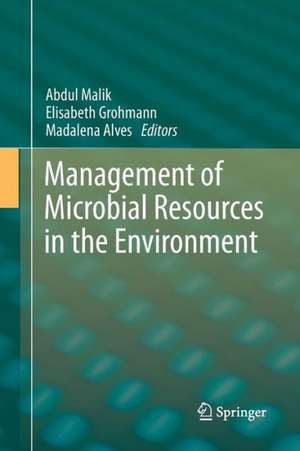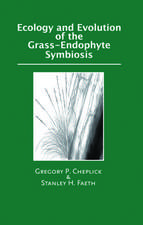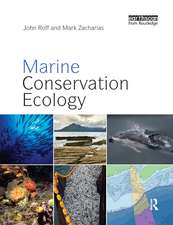Management of Microbial Resources in the Environment
Editat de Abdul Malik, Elisabeth Grohmann, Madalena Alvesen Limba Engleză Paperback – 8 feb 2015
| Toate formatele și edițiile | Preț | Express |
|---|---|---|
| Paperback (1) | 1228.47 lei 6-8 săpt. | |
| SPRINGER NETHERLANDS – 8 feb 2015 | 1228.47 lei 6-8 săpt. | |
| Hardback (1) | 1234.77 lei 6-8 săpt. | |
| SPRINGER NETHERLANDS – 6 mar 2013 | 1234.77 lei 6-8 săpt. |
Preț: 1228.47 lei
Preț vechi: 1498.13 lei
-18% Nou
Puncte Express: 1843
Preț estimativ în valută:
235.13€ • 244.54$ • 197.04£
235.13€ • 244.54$ • 197.04£
Carte tipărită la comandă
Livrare economică 13-27 martie
Preluare comenzi: 021 569.72.76
Specificații
ISBN-13: 9789400793385
ISBN-10: 9400793383
Pagini: 544
Ilustrații: XII, 530 p. 34 illus.
Dimensiuni: 155 x 235 x 29 mm
Greutate: 0.75 kg
Ediția:2013
Editura: SPRINGER NETHERLANDS
Colecția Springer
Locul publicării:Dordrecht, Netherlands
ISBN-10: 9400793383
Pagini: 544
Ilustrații: XII, 530 p. 34 illus.
Dimensiuni: 155 x 235 x 29 mm
Greutate: 0.75 kg
Ediția:2013
Editura: SPRINGER NETHERLANDS
Colecția Springer
Locul publicării:Dordrecht, Netherlands
Public țintă
ResearchCuprins
1. Management of Microbial Resources in the Environment: A Broad Perspective.- 2. Recent development in the methods of studying microbial diversity.- 3. Microbial resource centres towards harnessing microbial diversity for human welfare.- 4. Fungal Biodiversity: A potential tool in plant disease management.- 5. Polyphasic identification and preservation of fungal diversity: concepts and applications.- 6. Bioinformatics approaches in studying microbial diversity.- 7. Recent advantages in metagenomic studies of soil microbial communities.- 8. Mobile genetic elements (MGEs) carrying catabolic genes.- 9. Conjugative plasmids in anthropogenic soils.- 10. Potential eco-friendly soil microorganisms: Road towards green and sustainable agriculture.- 11. Current Aspects of Metal Resistant Bacteria in Bioremediation: From Genes to Ecosystem.- 12. Anaerobic Digestion of the Organic Fraction of Municipal Solid Waste.- 13. Microbial Insecticides: Food Security and Human Health.- 14. Plant Growth Promoting Rhizobacteria (PGPR): Microbes in Sustainable Agriculture.- 15. Antibiotic resistance gene pool and Bacterial adaptation to Xenobiotics in the Environment.- 16. Synthetic lethal genetic interaction network and its utility for anticancer therapy.- 17. Adaptation of Candida albicans for growth within the host.- 18. Microbial biotechnology in marine biosystems.- 19. Bacteriocins: natural weapons for control of food pathogens.- 20. Anaerobic degradation of lindane and related compounds.
Recenzii
From the reviews:
“Management of Microbial Resources in the Environment is an eclectic mix of 20 papers centered on the very broad theme of microbes as an environmental resource. … The book can serve as a useful first reference for a knowledgeable researcher seeking to enter a new field; the articles are well written … . Summing Up: Recommended. Graduate students, researchers/faculty, and professionals.” (R. Seelke, Choice, Vol. 51 (5), January, 2014)
“The present book, edited by recognized leaders in the field, is written by well-known scientists from 10 countries … and covers various topics, such as the exploration, collection, characterization, evaluation and conservation of microorganisms to be used in agriculture, ecosystems, environments, industry and medicine. … Both editors and contributors did a very good job … . this book is very useful for readers belonging to different domains of science, readers at different career stages, from undergraduate level up to true specialist status.” (Ioan I. Ardelean, Romanian Journal of Biochemistry, Vol. 50 (1), 2013)
“Management of Microbial Resources in the Environment is an eclectic mix of 20 papers centered on the very broad theme of microbes as an environmental resource. … The book can serve as a useful first reference for a knowledgeable researcher seeking to enter a new field; the articles are well written … . Summing Up: Recommended. Graduate students, researchers/faculty, and professionals.” (R. Seelke, Choice, Vol. 51 (5), January, 2014)
“The present book, edited by recognized leaders in the field, is written by well-known scientists from 10 countries … and covers various topics, such as the exploration, collection, characterization, evaluation and conservation of microorganisms to be used in agriculture, ecosystems, environments, industry and medicine. … Both editors and contributors did a very good job … . this book is very useful for readers belonging to different domains of science, readers at different career stages, from undergraduate level up to true specialist status.” (Ioan I. Ardelean, Romanian Journal of Biochemistry, Vol. 50 (1), 2013)
Textul de pe ultima copertă
This volume details the exploration, collection, characterization, evaluation and conservation of microbes for sustainable utilization in the development of the global as well as national economies, e.g. in agriculture, ecosystems, environments, industry and medicine. Many research institutes and universities all over the world carry out microbiological and biotechnological research, which generates substantial genomic resources such as cDNA libraries, gene constructs, promoter regions, transgenes and more valuable assets for gene discovery and transgenic product development.
This work provides up-to-date information on the management of microbial resources in the environment. It also covers the ecology of microorganisms in natural and engineered environments. In trying to understand microbial interactions it further focuses on genomic, metagenomic and molecular advances, as well as on microbial diversity and phylogeny; ecological studies of human, animal and plant microbiology and disease; microbial processes and interactions in the environment; and key technological advances. Though not intended to serve as an encyclopedic review of the subject, the various chapters investigate both theoretical and practical aspects and provide essential basic information for future research to support continued development.
This work provides up-to-date information on the management of microbial resources in the environment. It also covers the ecology of microorganisms in natural and engineered environments. In trying to understand microbial interactions it further focuses on genomic, metagenomic and molecular advances, as well as on microbial diversity and phylogeny; ecological studies of human, animal and plant microbiology and disease; microbial processes and interactions in the environment; and key technological advances. Though not intended to serve as an encyclopedic review of the subject, the various chapters investigate both theoretical and practical aspects and provide essential basic information for future research to support continued development.
Caracteristici
Details microbial resources and the related bioinformatics and biotechnology Presents the recent developments in the microbial diversity study methodology Provides up-to-date views on topics such as microbial insecticides (i.e. in food security and human health), bacteriocins (i.e. natural weapons for control of food pathogens) and more ?
















